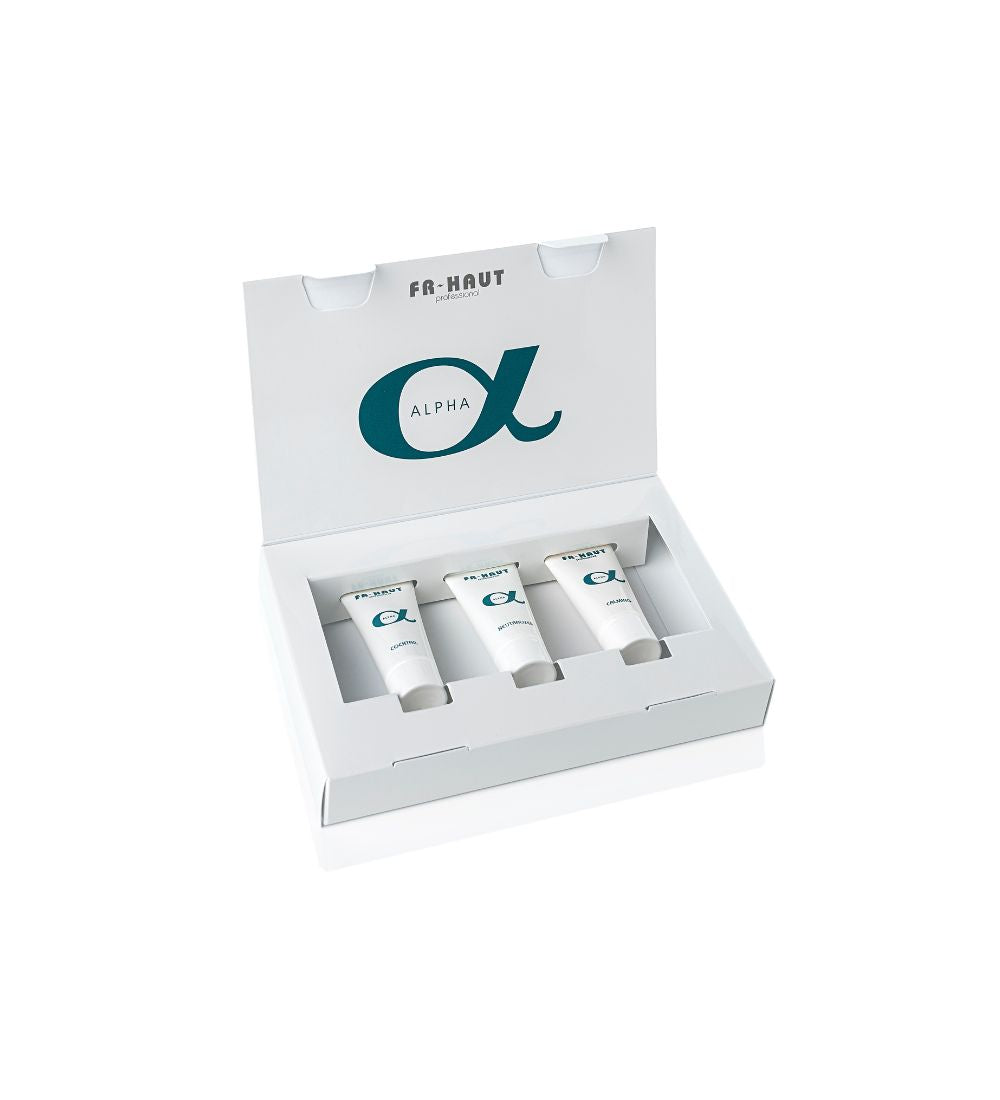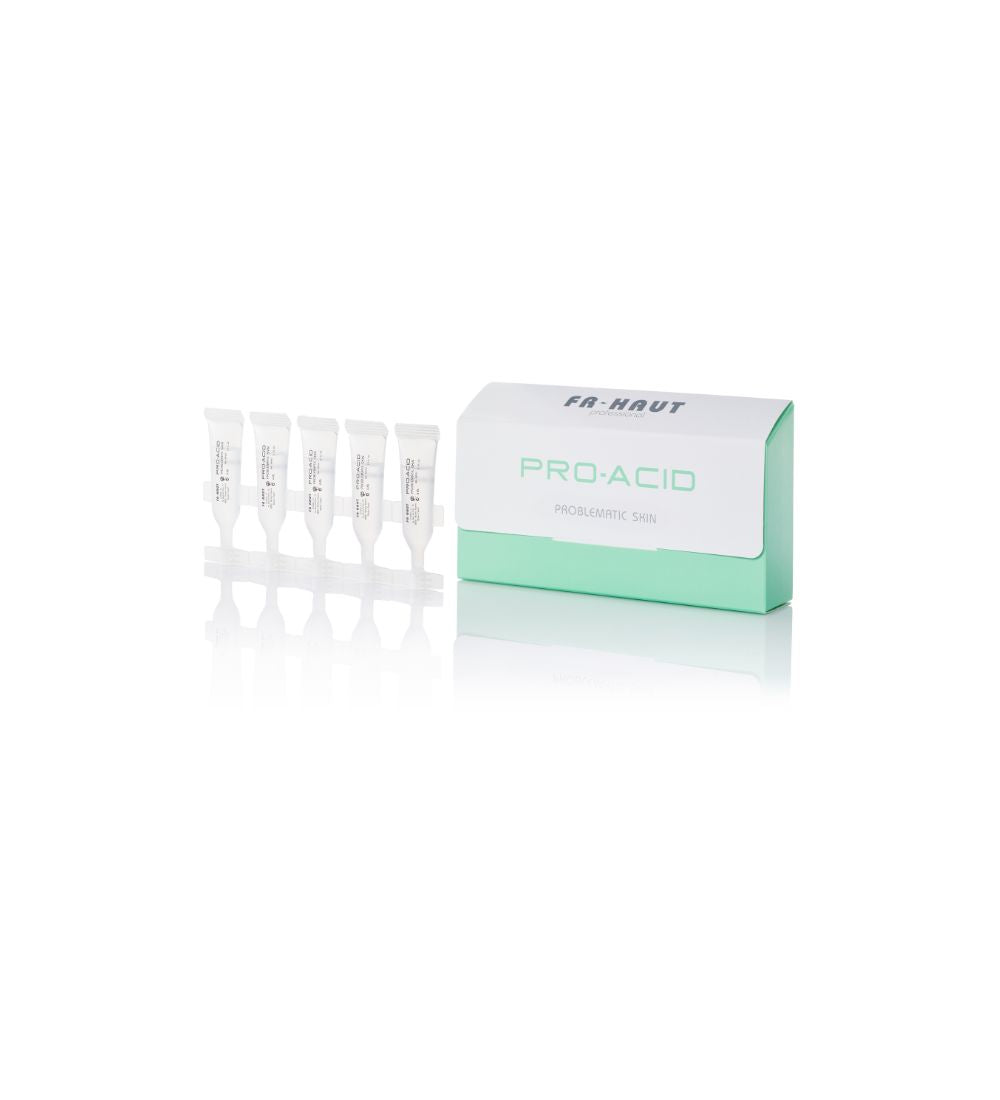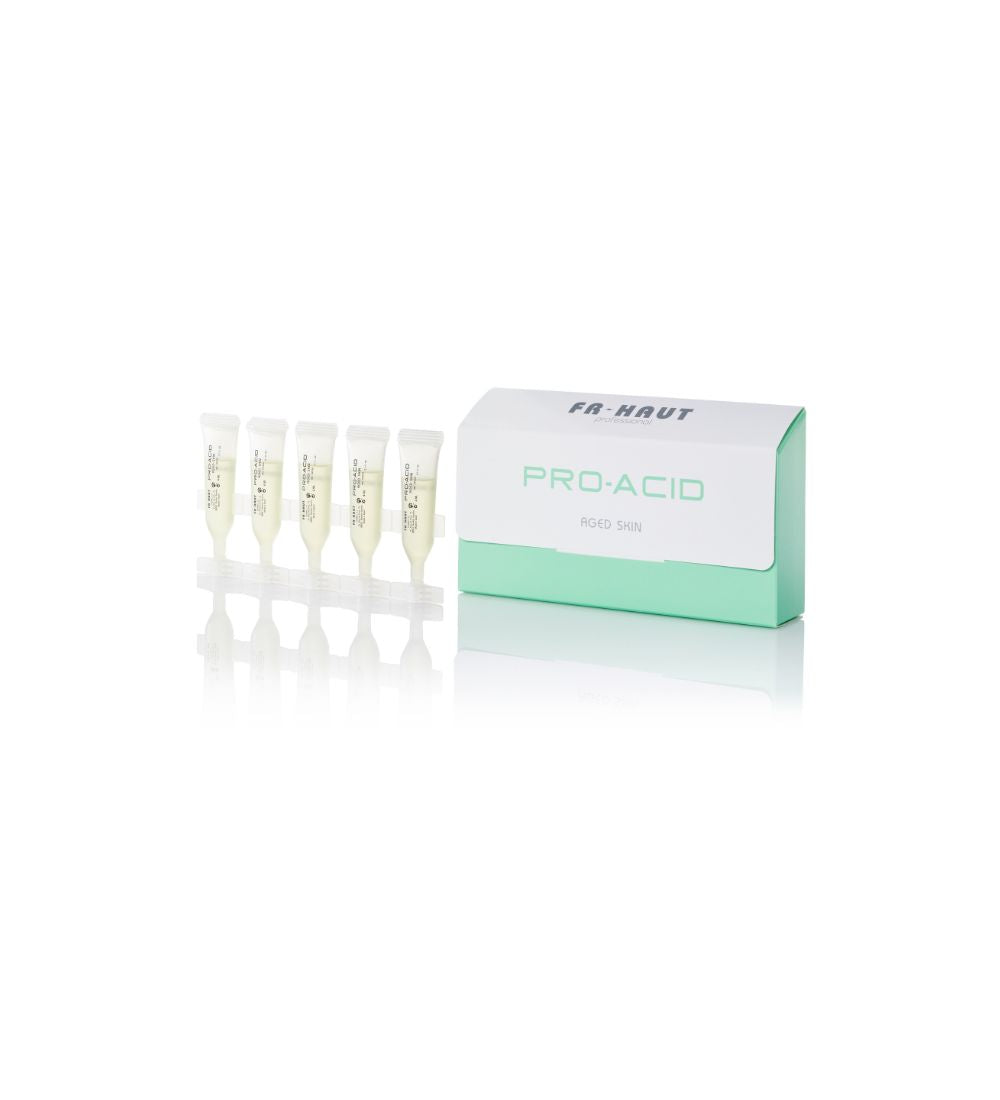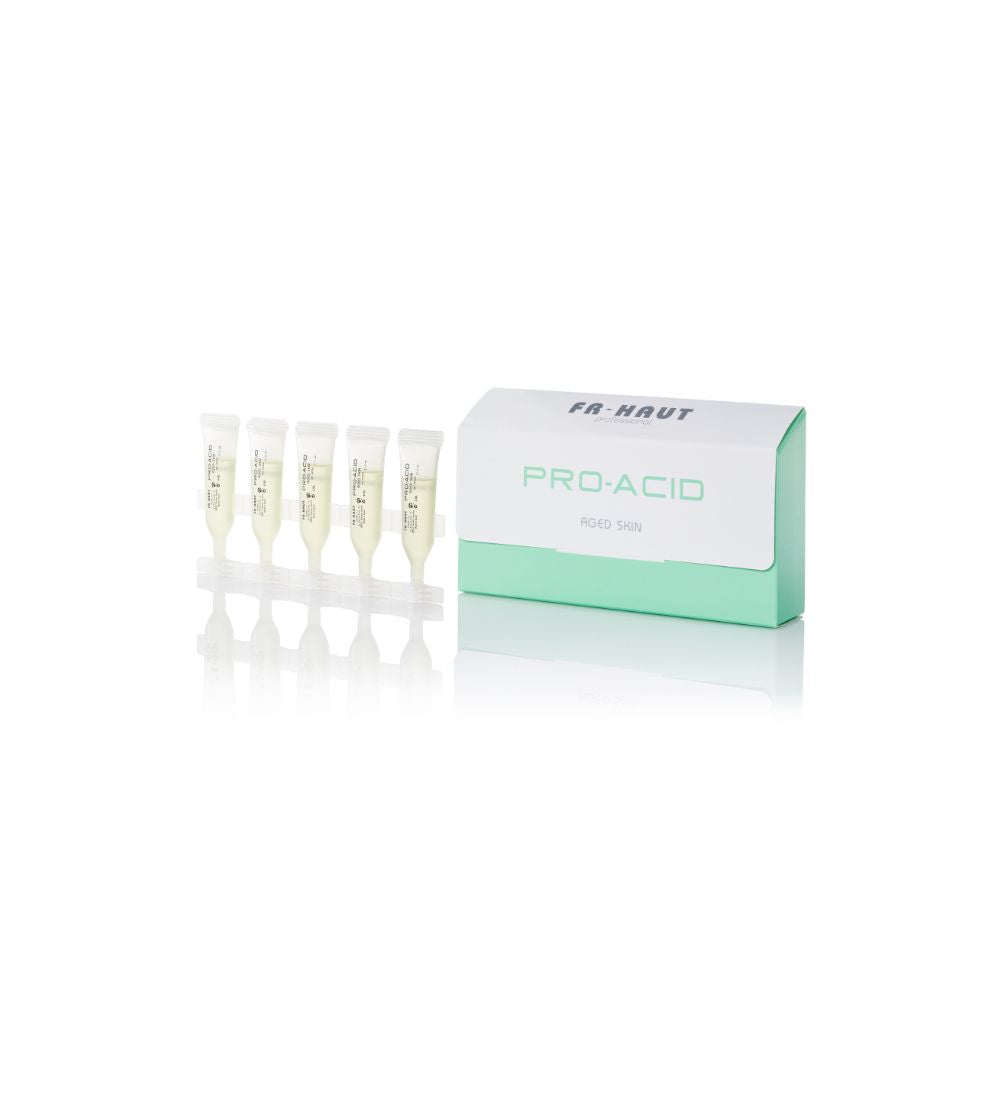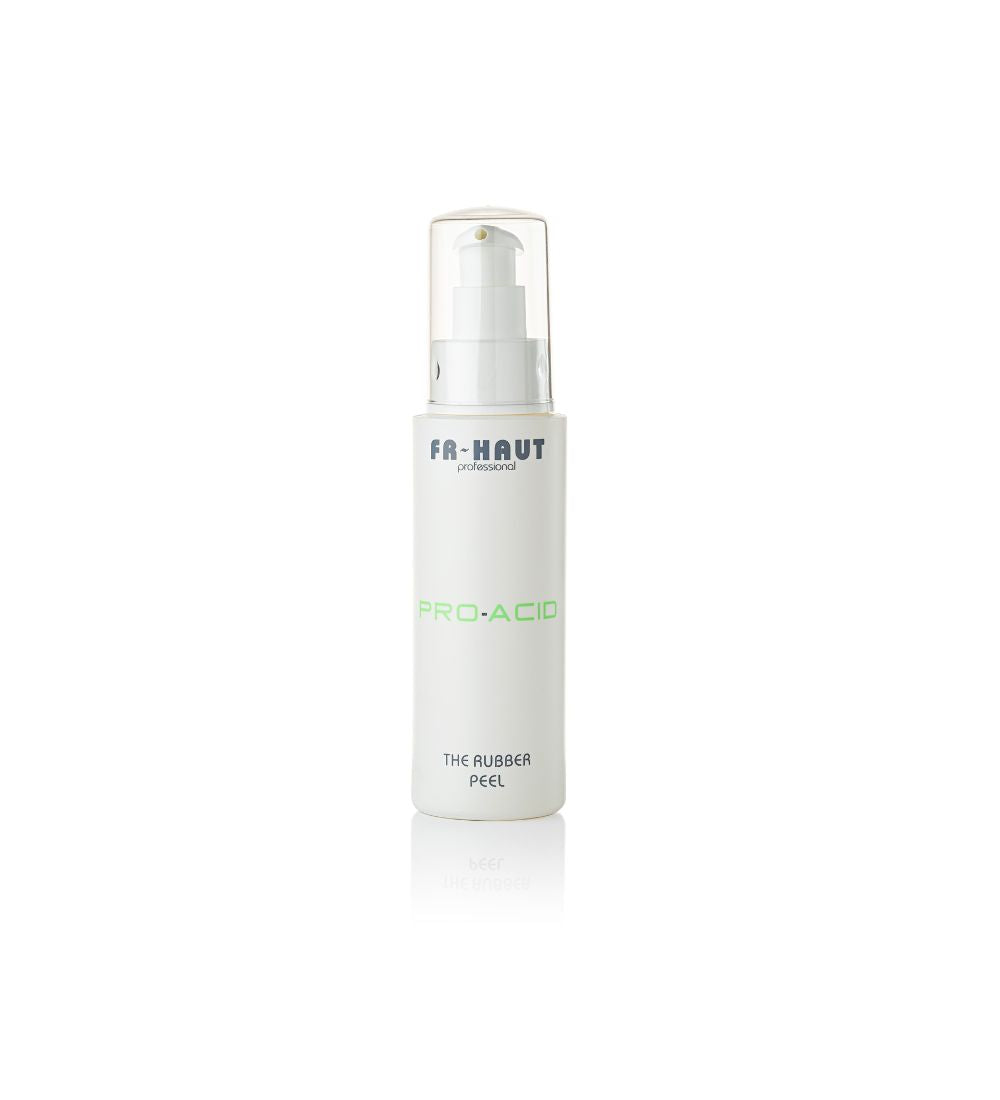AHAS & BHAS:
AHA (Alpha-hydroxy acids) and BHA (Beta-hydroxy acids) are key tools to fight against ageing. They are both acids that exfoliate the skin and stimulate cell regeneration.
As they are powerful acid peelings, they can remove dead cells and leave the skin radiant, permeable, activated and alive.
The difference between them is their molecular structure, which gives specific properties to each group.
Thanks to their hydrophilic properties, they renovate the skin superficial layer and fill the water deposits. That is why they are most used in damaged, aged or dry skins: because they work more superficially.
After the use of AHA, the collagen production is stimulated and wrinkles are hydrated. Moreover, AHA have an anti-ageing effect and can close the skin pores.
Alpha-hydroxy acids can be sourced from Nature (citric substances, sugar cane, etc.) or can be synthetic.
The most used AHA are glycolic acid, lactic acid, pyruvic acid and tartaric acid.
BETA (beta-hydroxy acids)
On the other hand, BHA are lipophylic and thus can penetrate more profoundly into the skin (follicles and glands), cleansing pores from the inside. That’s why they are very used in blemished skins and those with black spots.
BHA have bactericidal and anti-inflammatory properties, so they are particularly useful to treat skins with acne.
If applied regularly, the skin will be less prone to spots and irritations.
The most common BHA is the salicylic acid.
Benzoic acid and butyric acid are also BHA, but they are less used.
The combination of AHA and BHA is very advisable: this way we work on all skin layers and the results will be amazing.
1. Citric acid:
It is an alpha-hydroxy acid sourced from fruits, specially citric fruit (grapefruit, lemon, orange...).
As the rest of AHA, it has keratolytic properties, so it helps to remove dead cells from the corneal layer.
Its molecule is bigger than the molecule of other AHA; so its peeling capacity is smaller and it can be used on the most delicate and fine skins.
2.Glycolic acid:
It is probably the acid most commonly used in cosmetics.
The glycolic acid or ethanoic-2-hydroxy-acid is sourced from fruits, milk sugars and sugar cane.
As it is the alpha-hydroxy acid with the smallest molecular chain, it can easily and quickly penetrate into the skin to the deepest layers, so it became the perfect agent, most commonly used in dermatological peelings, with great cosmetic and therapeutic targets.
Glycolic acid goes to the epidermal corneal layer and reduces cellular cohesion, so that it triggers the flaking of the skin and the peeling of the external layers of the stratum corneum.
It has been proved that it also stimulates the synthesis of collagen, hyaluronic acid and fibroblasts. Several authors proved that it also promotes the epidermal proliferation through the proliferation of basal keratinocytes and the release of ATP.
3.Kojic acid:
Kojic acid is naturally found in the micelles of a variety of fungus, specially in filamentous filamentous fungus. It is a sub-product from the fermentation of these fungus to produce an alcoholic drink from rice (sake): it was discovered the reason why people elaborating this liquor have their hands so white and soft. Scientists could isolate the fungus responsible for the production of this acid and it was called koji (fungus).
Kojic acid is an alpha-hydroxy acid that can control and remove the production of melanin in a selective way.
The skin's melanin production is not produced in a fixed quantity. Cells often produce more melanin as a response to environmental conditions or body inner conditions.
When the skin is exposed to the sun ultraviolet radiation, melanocytes increase their production activities, tanning the skin. The repeated sun exposure can trigger a permanent increase in melanin production and some skin spots, creating small freckles or big sun spots.
Properties of kojic acid:
- Anti-blemishes for the skin.
– Inhibitor of melanin formation.
- Whitening agent.
- Anti-ageing.
- Antioxidant.
- Antibiotic.
4. Lactic acid:
It is a natural AHA obtained from the fermentation of milk, apples or sugar.
Cleopatra knew its benefits on the skin and she bathed with milk.
Because of the structure and size of its molecule, this active substance is a great soft peeling, suitable for delicate skins. As it is very big, its keratolytic action is very smooth.
5. Pyruvic acid:
It is an alpha-hydroxy acid frequently found in fermented fruit, apple or vinegar.
It is a small molecule with a very small molecular weight, and lipophylic, so it penetrates easily the skin: it is one of the alpha-hydroxy acids that act deepest and fastest.
It acts on the epidermis, penetrating until the layer behind this as a keratolytic agent and weakener of intercellular connexions.
It stimulates and boosts the production of elastic fibres (collagen and elastin), as well as glycoproteins.
It is perfect to treat medium to deep wrinkles.
As it penetrates until the deepest skin layers, it has hydrating and anti-ageing properties.
It also has extraordinary effects on pigmented areas.
Its main difference with the rest of alpha-hydroxy acids is that it acts on the inner part of a variety of body chemical reactions during the glucose-separation phase, giving a boost of energy to the skin to produce collagen and elastin.
Therefore, the main properties of pyruvic acid are:
- Keratolytic effect: it weakens intercellular connexions.
- It removes hyper-pigmented cells.
- It promotes elastin and collagen production.
- It smooths the relief of the skin: the skin will look soft and even.
- Antimicrobial effect: it profoundly cleanses the pores.
- It regulates the sebum production.
- It recovers the youth skin density: it corrects wrinkles and expression lines.
It is perfect to remove flakes and dead epithelial cells in cases of dermatitis, psoriasis or very sensitive skins that need a superficial, soft peeling.
It has illuminating and hydrating properties.
It also offers some protection, in spite of being an acid, as it regenerates the lipidic protective film.
6. Salicylic acid:
It is an acid sourced from the leaves and bark of some plants and trees such as willow (salix alba).
It is a beta-hydroxy acid, which means it has an hydroxyl group (OH) linked to the B position of the carboxyl group (COOH), which confers the acid property.
It is a great lipophylic agent, used in peelings for oily skins.
As it is a beta-hydroxy acid, it has a great skin penetration capacity and it plays an important role on the fight against pathogenic agents and bacteria (acne) and on the regulation of the sebaceous production.
Its properties reinforce the Langerhans system (a defence in sensitive skins).
7.Azelaic acid:
It is an alpha-hydroxy acid sourced from a fungus (pityrosporum ovale), typical of cereals and also of our skin. Some studies suggest that some of the skin pathologies are caused because of the unbalance on this fungus in the skin (melasma, acne...).
This acid has three beneficial properties:
1. Antibacterial
It is antimicrobial, both against aerobic organisms and anaerobic organisms, and it doesn’t create any resistance as the erythromycin does (the bacteria becomes resistant).
The fact that despite being a fungus it can prevent the proliferation of fungus and bacteria can be odd, but it is the same as penicillin.
2. Depigmentant
It inhibits tyrosinase. A 20% of azelaic acid is equivalent to a 4% of hydroquinone in cases of melasma and inflammatory hyper-pigmentation (after acne or traumas). But the most important factor is that it can control in a selective way the irregular cells producing pigment, so it can improve the performance of these “fungus” in charge of skin pigment. It is therefore a “cure”.
3. Anticomedo
It has the ability to reduce the size and number of blackheads. Its ability to reduce blackheads is similar to tretinoin at 0.05%, but the adverse skin reaction (redness, dehydration, etc.) is much less.
It prevents follicle keratinisation.

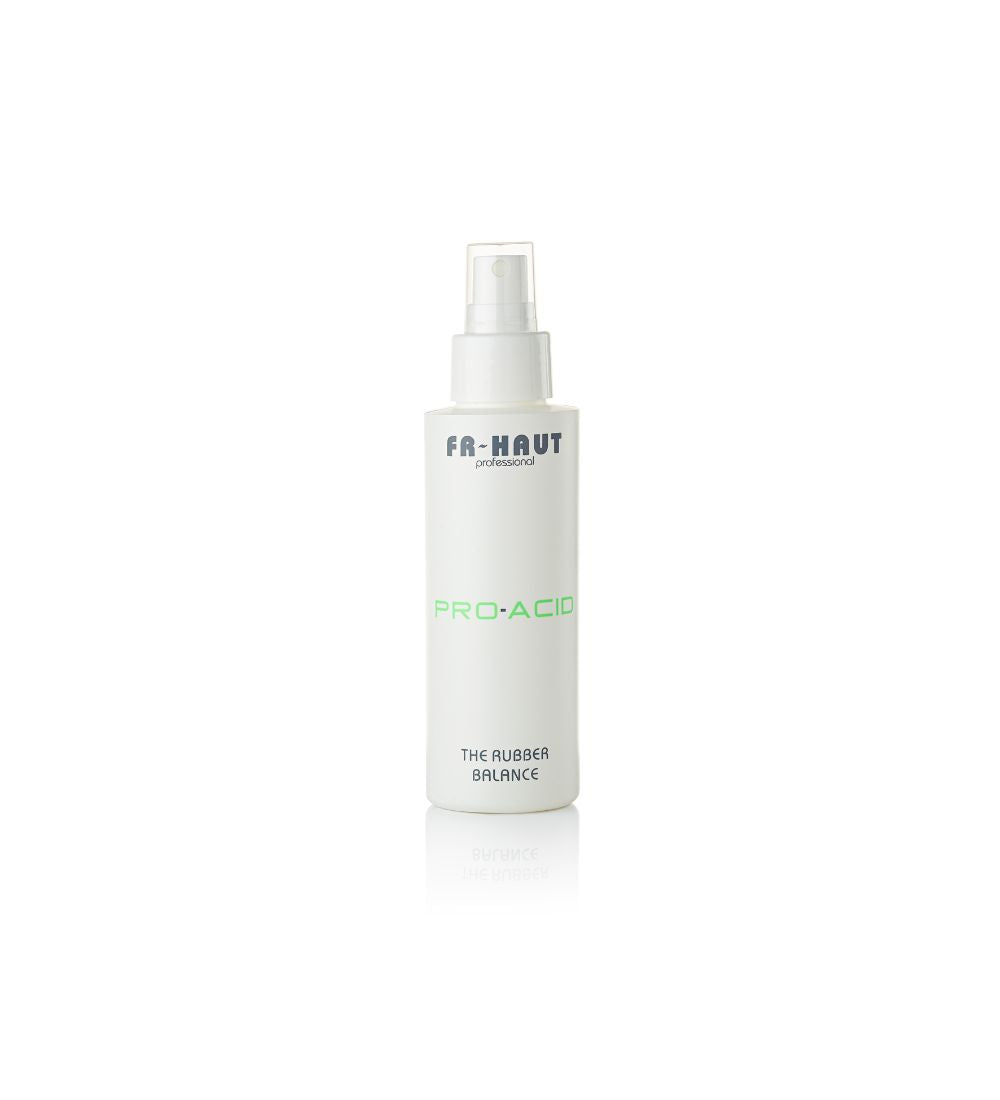 Vendor:THE RUBBER BALANCE NEUTRALIZER, 125 mlPRO-ACID
Vendor:THE RUBBER BALANCE NEUTRALIZER, 125 mlPRO-ACID

